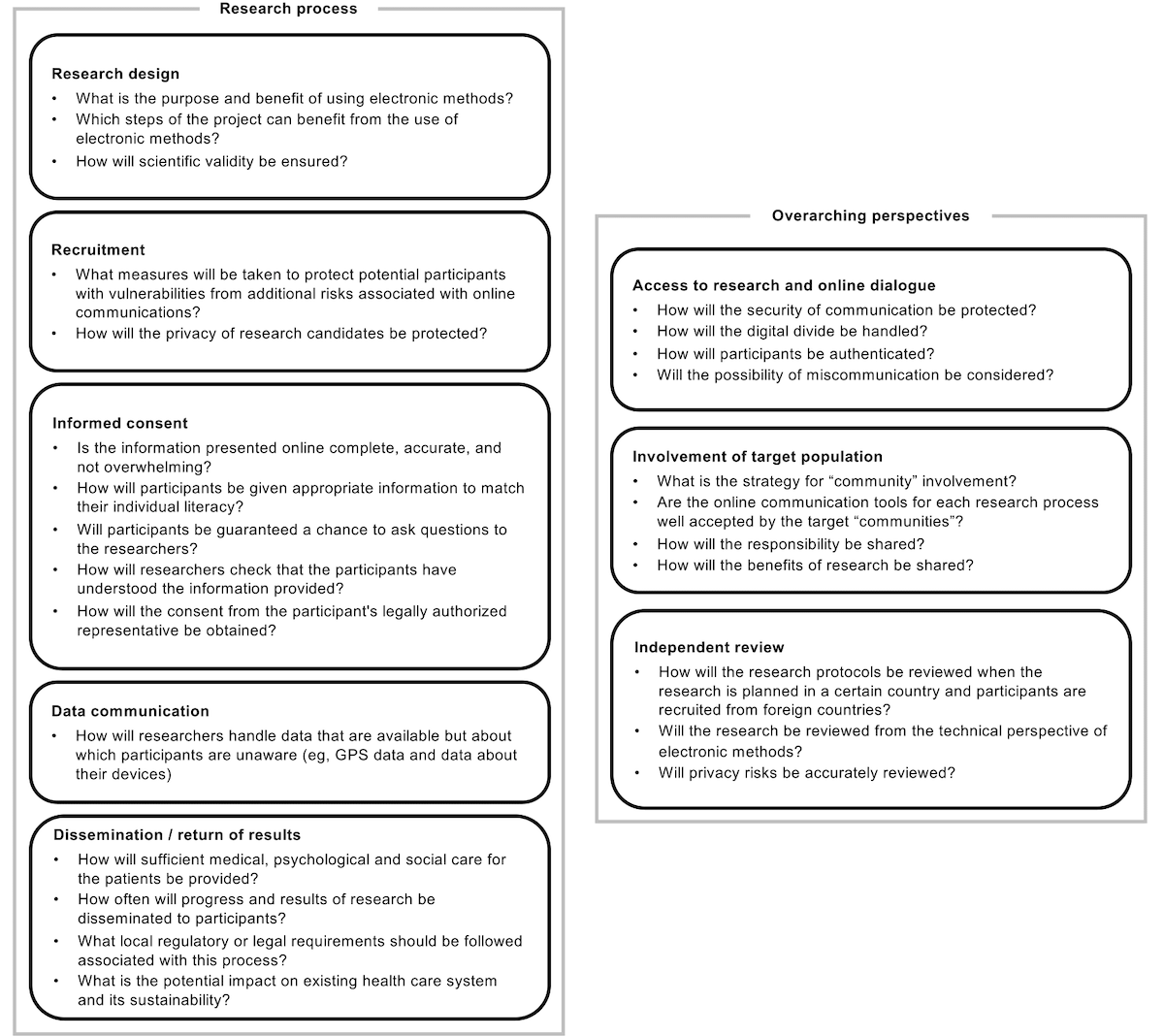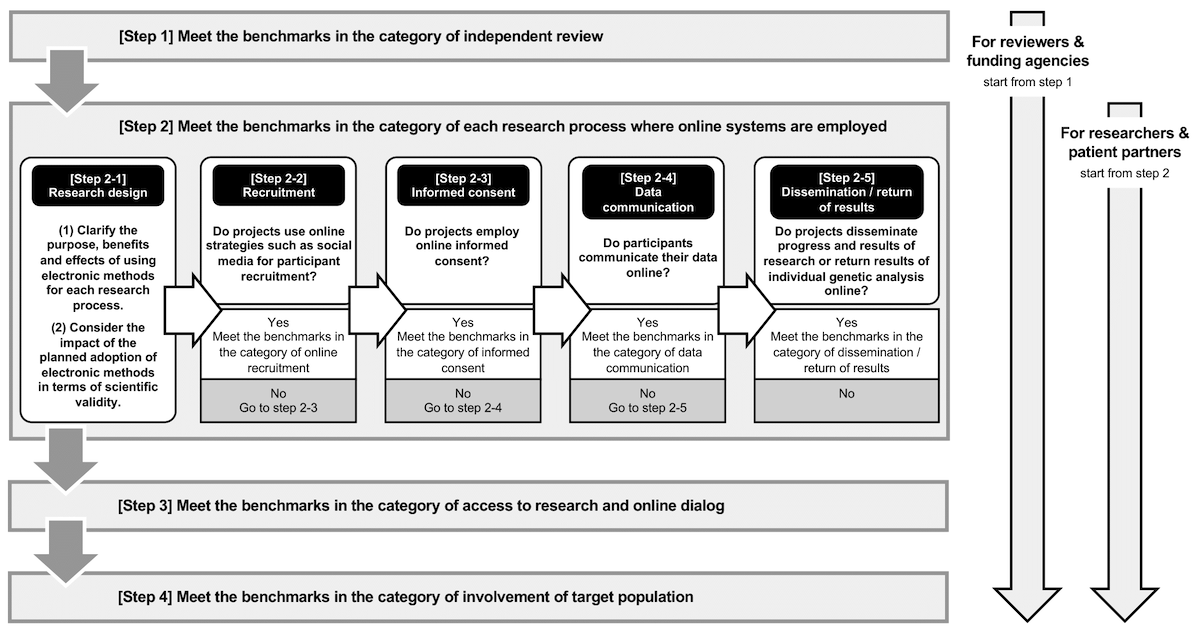Newswise — Osaka, Japan – Since its inception, the internet has fundamentally changed all parts of human society for both good and ill, and medical research is no exception. The fast pace of change enabled by digital technologies means that ethical guidelines may not address all the issues that arise in modern research. To help solve this problem, researchers from Osaka University performed an ethical analysis based on the eight ethical principles for clinical research, and they proposed an ethical framework and practical guidance for communicating with research participants through the internet.
The ability to recruit study participants regardless of geography is a major advantage of electronic communications, such as for studies of rare diseases, where it is often difficult to find enough participants in a defined geographic area to ensure scientific validity. However, the ease and scale of electronic communications has also led to serious problems such as violations of privacy, duplicate registrations, and misinformation that existing ethical guidelines did not anticipate.
“Currently, there are no comprehensive rules or guidelines for the various electronic methods used to communicate with research participants,” says Atsushi Kogetsu, lead author of the study, “and that includes methods for collecting electronic informed consent and online recruitment.” Hence, the authors performed an ethical analysis to determine what the issues are and how they relate to each other.
The analysis is based on the Emanuel framework, which consists of eight ethical principles for clinical research: collaborative partnership, social value, scientific validity, fair participant selection, favorable risk-benefit ratio, independent review, informed consent, and respect for participants. For instance, the researchers found that although there are many advantages to online communications, it is important to consider how patient access to the internet varies according to circumstances and culture, which could affect participant recruitment, leading to selection bias.
“We also need to be careful how we present information to study participants,” says Kazuto Kato, coauthor of the study. “It’s important to remember that the lack of nonverbal information when using some online tools can lead to miscommunication. We need to make sure that information is complete and accurate but not overwhelming.”
The proposed framework covers both the specific processes involved in medical research (from research design to the dissemination of results) and three overarching perspectives (access to research, community involvement, and independent review). It provides the practical steps independent reviewers, funding agencies, researchers, and patient partners can use to ensure all ethical guidelines are followed. The researchers believe the results of this study and its framework will improve future practice in medical research using the internet.
The article, “Framework and Practical Guidance for the Ethical Use of Electronic Methods for Communication With Participants in Medical Research,” was published in the Journal of Medical Internet Research at DOI: https://doi.org/10.2196/33167
Summary: To comprehensively understand the ethical issues involved when communicating with research participants through the internet, researchers from Osaka University developed an ethical framework and practical guidelines to implement findings from their research. This is the first such framework and accompanying guidelines for the use of electronic methods for communication with research participants, and it is anticipated to foster better practice in medical research using the internet.
Tweet: The ethics of medical research should move with the times, especially when communicating with study participants online, says Osaka U.
Tweet 2: Osaka U introduces the first full framework and practice guidelines for ethical electronic communications with participants in medical research.
Primary Keyword: Research ethics
Additional Keywords: communication, internet, informed consent, scientific integrity

Figure 1. Framework for the governance of genomics research involving information and communication technology.
The five boxes on the left show the research process, and the three boxes on the right show overarching perspectives related to the five processes. Each box contains the main benchmarks for that issue or process.
ライセンス: CC BY(Creative Commons CC BY 適用の論文で使用されている図)
クレジット(著作権)表記: 2022, Atsushi Kogetsu and Kazuto Kato, Framework and practical guidance for the ethical use of electronic methods for communication with participants in medical research. Journal of Medical Internet Research

Figure 2. Guidance chart for ethical research using online communication with participants.
This guidance chart mainly consists of four steps. Step 1 is for independent reviewers and funding agencies, and steps 2, 3, and 4 are for reviewers, funding agencies, researchers, and patient partners.
ライセンス: CC BY(Creative Commons CC BY 適用の論文で使用されている図)
クレジット(著作権)表記(上記参照): 2022, Atsushi Kogetsu and Kazuto Kato, Framework and practical guidance for the ethical use of electronic methods for communication with participants in medical research. Journal of Medical Internet Research
Title: “Framework and practical guidance for the ethical use of electronic methods for communication with participants in medical research”
Journal: Journal of Medical Internet Research
Authors: Atsushi Kogetsu and Kazuto Kato
DOI: 10.2196/33167
Funded by: Japan Agency for Medical Research and Development
About Osaka University
Osaka University was founded in 1931 as one of the seven imperial universities of Japan and is now one of Japan’s leading comprehensive universities with a broad disciplinary spectrum. This strength is coupled with a singular drive for innovation that extends throughout the scientific process, from fundamental research to the creation of applied technology with positive economic impacts. Its commitment to innovation has been recognized in Japan and around the world, being named Japan’s most innovative university in 2015 (Reuters 2015 Top 100) and one of the most innovative institutions in the world in 2017 (Innovative Universities and the Nature Index Innovation 2017). Now, Osaka University is leveraging its role as a Designated National University Corporation selected by the Ministry of Education, Culture, Sports, Science and Technology to contribute to innovation for human welfare, sustainable development of society, and social transformation.
Website: https://resou.osaka-u.ac.jp/en
Original article
Kogetsu A, Kato K. Framework and practical guidance for the ethical use of electronic methods for communication with participants in medical research. J Med Internet Res. 2022;24(4):e33167 URL: https://www.jmir.org/2022/4/e33167/ doi: 10.2196/33167
